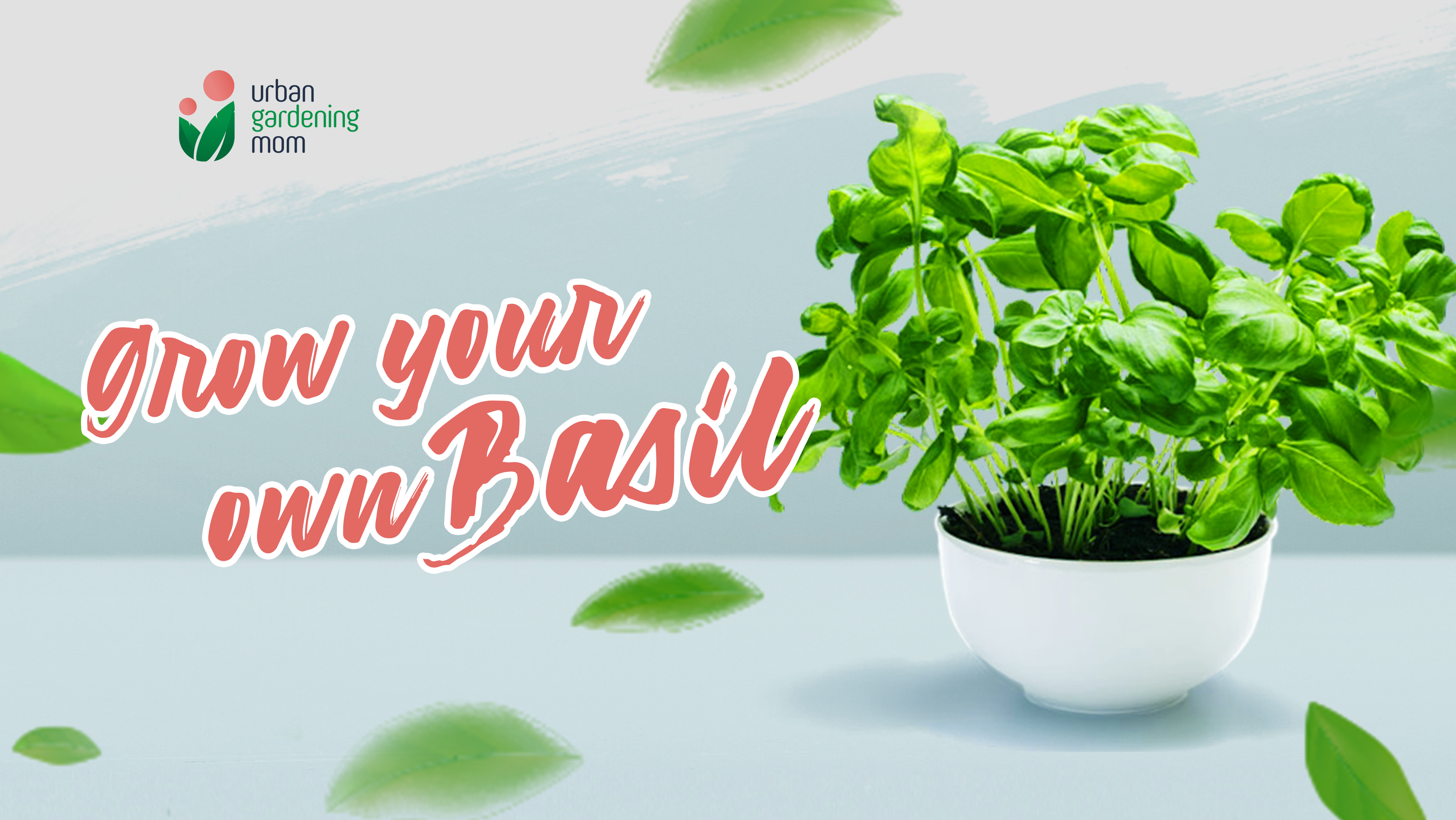
Grow Your Own Basil at Home
- Sep 10, 2021
- 0 Comment(s)
The global pandemic broke down our daily routine resulting in a drastic change in our lives. Like in other countries, the majority of Filipinos have resorted to urban gardening to cope with the nationwide lockdown implemented in the Philippines. I have been in the gardening scene for more than ten years now, but this sudden surge of interest in gardening is something phenomenal. Suddenly, almost every household had in the country started to grow something while spending more time at home.

If there is one thing that I grew to love more while stuck at home, that would be taking my produce from garden to table.
Since we're all taking our classes and work at home, I thought it would be the perfect time to prepare hearty and healthy meals for my family. One key ingredient that we often use in our food is basil, which I usually pick fresh from our herb garden - and in this blog, I'm going to share how I grow mine in container pots at home.

I have four kinds of basil: sweet basil, purple basil, Thai, and Italian large leaf basil. All of these varieties thrive well in the humid conditions here in the Philippines. Basil can be grown successfully in pots, which makes them very ideal for urban gardening.
While they can grow from seeds, this herb is easier to propagate from cuttings, because the cutting stems grow roots easily. I have tried to propagate it from seeds and it took me a lot longer to grow them. Still, I find basil as the easiest and most gardener-friendly herb to grow in tropical weather conditions.
Here are 5 tips that I found very useful in growing basil herbs at home.
FIRST. Prune the top leaves every week. This will allow the plant to grow new buds from the leaf nodes, which will eventually grow into more stems. Snip off the flower buds (don't allow them to bloom), or else the leaves will lose their strong aroma and flavor.
SECOND. Expose the plants to a lot of sunlight. While they can thrive in partial shade, the herbs benefit from more sunlight. The plants that are exposed to at least 6 hours of sunlight tend to grow larger leaves and bushy foliage.
THIRD. When grown in containers, use well-draining potting media. Basil loves acidic soil. I use a potting mix that contains a combination of aged coco peat, worm castings and pumice. If available, perlite can be used instead of pumice.. These materials are usually available in most gardening stores. Pre-mixed potting mix is also commercially available.
FOURTH. Rejuvenate with plant nutrients once a month. The nutrients in the potting media will get depleted over time. Every month, I make sure I replenish the nutrients by adding worm castings or composted manure to the soil, focusing along the edges of the pots where the root tips tend to concentrate.
FIFTH. Water your basil when the soil gets dry. Basil thrives well in rich moist soil or media. In the Philippines, we have dry and wet seasons. During the hot dry months, peat-based potting mix dries up easily. In this case, daily watering may be necessary. During wet seasons, however, water them only as needed.
Most herb varieties, including basil, are not prone to pest attack. Its strong aroma tends to repel most of the common garden pests. I would recommend basil as a starter herb for beginners. It is a very sturdy herb plant, and it generally needs only a little attention, thus making it ideal if you're a busy mom like me.

